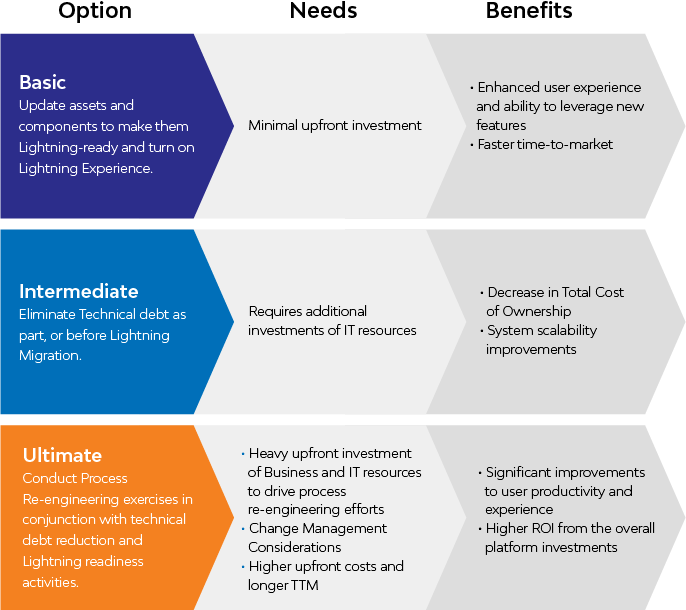Charting Roadmap for Migrating from Salesforce Classic to Lightning Platform
“In with the new and out with the old”- This is a philosophy that governs many aspects of our daily lives, and it inevitably underlines the factors determining which software enterprises turn to as well. With changing customer habits necessitating a dynamic sales strategy, companies that have so far been relying on Salesforce Classic for their CRM functions may soon need to revisit that approach.
Salesforce Classic has long been an industry favorite, but there’s now a better version in town – Salesforce Lightning – and there is no better time to consider migration.
Reasons to migrate to Salesforce Lightning today
The core of this new Salesforce version, and the primary reason why enterprises should weigh transition, revolves around the most important aspect of CRM and application platforms – user experience. Behind every sales platform are human interactions, so any enhancements to user experience must be seen in light of boosting these interactions and adding business value. Alongside migration to Salesforce Lightning, enterprises have an opportunity to further optimize their business processes, eliminate “technical debt” and supercharge user experience. Furthermore, Lightning even further democratizes building custom applications providing simple-to-use configuration and development tools.
For organizations across industries, this migration can yield tangible gains in terms of enhanced productivity, increased adoption and collaboration between functions, and higher IT efficiency and cost savings. There is a reason why Salesforce considers Lightning to be one if its best innovations, and its reimagined user experience and platform have only gotten better over time. Whether it’s sales, service or customer communities, embedded intelligence and pervasive collaboration allows users to work smarter while retaining control over all their critical data.
How to best manage Lightning migration
While migrating critical software often entails addressing complex challenges, setting out on a clearly defined implementation roadmap is important. Since the IT environment and resource matrix of every organization is unique, migration to Salesforce Lightning requires a tailored approach too.
Such change also requires wholehearted user adoption. We strongly recommend businesses spend time equipping users with the skills and mindset needed, and enforce effective change management plans, for migrating to Salesforce Lightning.
While the Salesforce native toolset provides recommendations around Lightning readiness and technical considerations, it is encouraged to dig deeper into the environment and correlate existing setup to current IT and user pain points. This way Lightning migration can also become a path for maximizing the return into the investment in the Salesforce platform.
We recommend three different approaches for Lightning migration, depending on the enterprise’s requirements:
- Basic – With minimal upfront investment, this approach helps companies update quickly to ensure compatibility with Lightning. It improves time-to-market and also enables enterprises to leverage new Lightning features and enhance user experience. This approach focuses on addressing basic elements required to switching on Lightning Experience, such as updating VisualForce pages, buttons, etc.
- Intermediate – With additional investment directed toward IT resources, this approach focuses on eliminating major technical debt. It significantly reduces the total cost of ownership too and supports substantial improvements in the system’s scalability.
- Ultimate – The most in-depth option of the lot, this approach requires heavy upfront investment to drive process reengineering from the inside out and create Lightning readiness. Significant improvements to user experience and productivity can be realized with higher ROI.

Regardless of the approach, it is essential to bring IT and business to the table to jointly define and execute a roadmap for the program and achieve success.
More from Dmitri S. Novomeiski
The automotive industry has evolved rapidly over the past decade with the shift towards electrification,…
Channel partner strategy is an essential growth vector for many organizations across industries.…
As we know, data is being termed as the proverbial “new oil.” The success of an organization…
Digital transformation (DX) has been the buzzword in the enterprise world for a few years now.…
Latest Blogs
Core banking platforms like Temenos Transact, FIS® Systematics, Fiserv DNA, Thought Machine,…
We are at a turning point for healthcare. The complexity of healthcare systems, strict regulations,…
Clinical trials evaluate the efficacy and safety of a new drug before it comes into the market.…
Introduction In the upstream oil and gas industry, drilling each well is a high-cost, high-risk…




